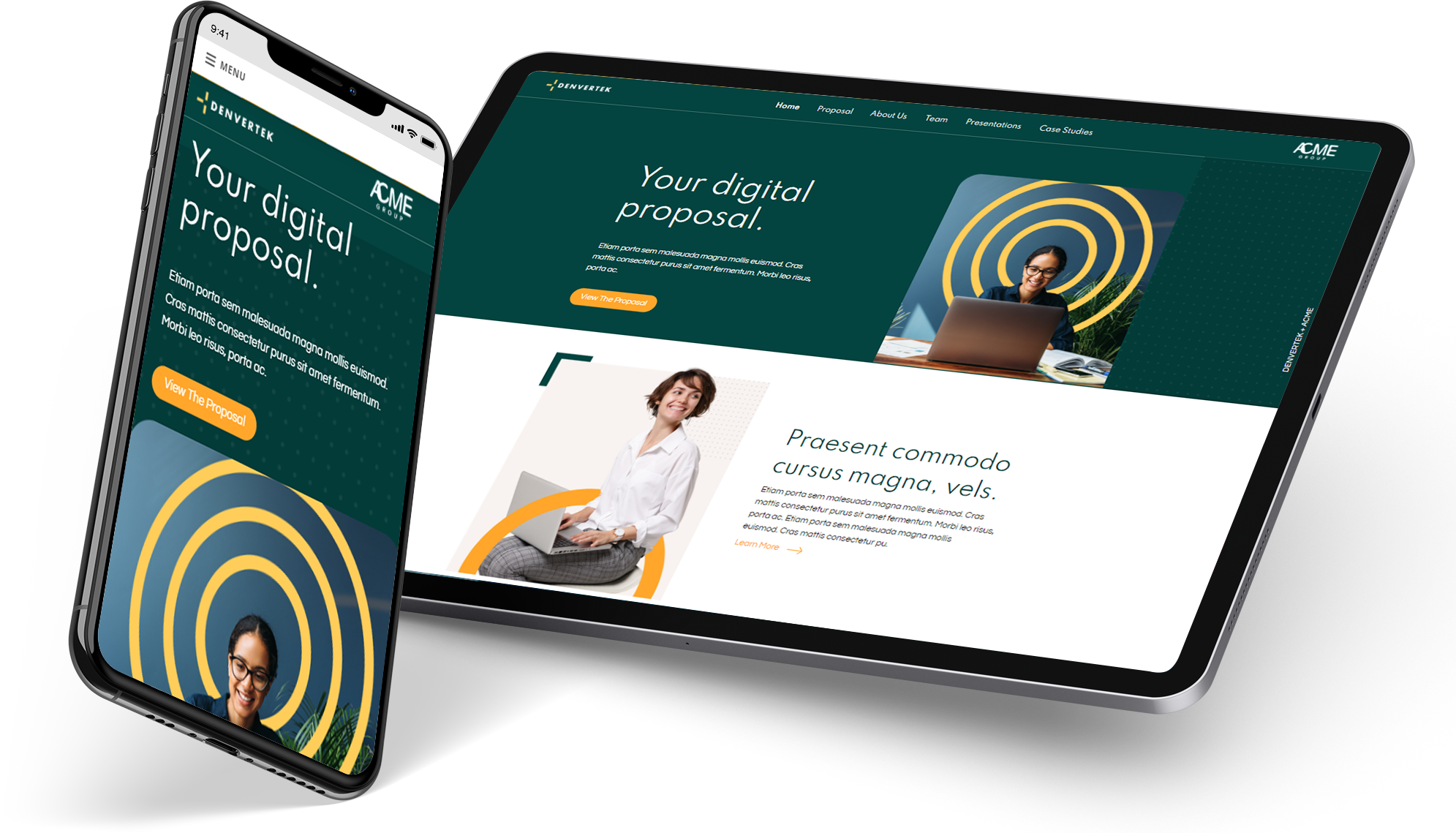A microsite is a webpage or group of web pages that have a singular purpose for a specific audience. Creating a microsite is the perfect way for you to elevate communication strategies and create rich content experiences. Many companies are using microsites to innovate their digital marketing and communication.
You might be wondering how to conceptualize one for your own company. These information-rich and engaging sites may seem highly sophisticated, but they’re simple to create and deploy with the right tools. Here are some ways you can use to get started.
A step-by-step guide on how to create your microsite
Figure out your microsite’s objective
Before you sit down and begin creating your microsite, carefully consider its purpose.
Understanding the broad and specific goals you’d like to achieve through creating your microsite will make planning content and features easier. A microsite can be as specific and action-oriented as you want it to be, and the best way to make the most out of what it has to offer is by considering its objectives.
Start with a general idea of what you want your microsite to do. A fantastic way to figure out your microsite objective is to consider SMART goals. SMART goals move abstract ideas about an overall objective into more specific action items that you can implement in your microsite.
Ask yourself these questions in your planning phase:
- Specific: What specific outcome are you hoping to achieve through your microsite? Making your objective as specific as possible keeps it from being too broad to evaluate.
- Measurable: What metrics can you use to help you determine if your microsite is effectively designed? Knowing the most valuable metrics beforehand makes it easier to pinpoint after launch.
- Achievable: Can this goal be achieved with the strategy and features you are using? Coordinating with your team and figuring out what’s possible for your company will save a lot of stress later on.
- Relevant: What content is most relevant to your goal? Knowing which pieces of content will play the largest roles helps plan navigation and site construction.
- Time-based: What is the time frame you are working with? Mapping out when each phase will take place and how long the microsite will be active will make it easier to divide up responsibilities.
Find a microsite builder with all the features you need
The right microsite building platform will help you meet all of your objectives.
It should be a simple, easy-to-use platform that anyone on your team can use to edit or contribute to your microsites. Try to avoid overly complicated solutions that require a sophisticated understanding of web development. Instead, focus on simple, necessary features like:
- Widgets (search bars, forms, sidebars)
- Interactive content (chatbots, newsfeeds, maps)
- Media (photos, videos, animations)
Including these elements will flesh out your microsite and keep users engaged with content, but it shouldn’t be a laborious process to integrate these features into your website. Instead, opt for a platform that’s intuitive and beginner friendly. This way, your microsite can be a collaborative, interdepartmental project.
Ease-of-use is also important when it comes to analytics.
Meeting objectives can only happen when you understand successes and failures. A microsite builder should feature options for you to understand on a detailed level which parts of your microsite pack the most punch and which fall flat. It allows your team to address those gaps either by adjusting features or by tailoring targeted follow-up communication.
Create a memorable domain name
A small but very important factor when it comes to website design is URLs and domain names. Your domain introduces a user to your microsite, much like a title.
A carefully thought out domain name is the difference between a microsite that’s easily accessible with the potential to boost SEO and one that fails to perform to the highest level.
In general, a good practice is to keep URLs simple and concise. Separate keywords in URLs with hyphens to help search engines recognize key phrases. Hyphens are more user-friendly than underscores because they’re easier to read and type. Also, keep capitalization to a minimum and make it as intuitive as possible
The right URL will make your microsite far more accessible, shareable, and targetable by search engines.
Be careful about your SEO strategy
Using a series of microsites solely to promote SEO growth is ill-advised.
A microsite is meant to create a webspace for a specific, goal-oriented purpose. This includes digital communication and creating opportunities to create immersive web experiences. They may be seen as having good SEO potential because they’re targeted, engaging, and link back to your main website in a purposeful way. Plus, more websites mean more chances for high search rankings, right?
Ultimately, microsites can hurt your SEO if used improperly. Hollow and repetitive microsites can have an inverse effect on SEO. Microsites that are used to host thin content and use similar domain names may be treated as low-quality redirect sites by search engines. The algorithms that decide rankings will clump them up with other similar websites, including your main site.
More websites connected to your domain means less traffic to your company website. It’s better to focus SEO efforts on your website and use microsites for more niche purposes.
Create engaging content based on your objective
A microsite is an opportunity to create content experiences for users.
You can craft these experiences with a robust microsite that is information-rich and has varied opportunities for engagement. Because the objectives and audiences of microsites are so targetted, you can curate specific, experience-based content that targets your objectives.
Seven factors can impact user experiences, which can ultimately affect their likelihood to take action or continue to engage with your content.
- Usefulness: How does content help solve a problem or address a need?
- Usability: Is it easy for users to accomplish what they need?
- Findability: Is important information and content easy to find?
- Credibility: Can users trust your microsite and its content?
- Desirability: Does your microsite leverage aesthetics and branding to keep users interested?
- Accessibility: Is your microsite usable by everyone? Are there options for users to change their experiences and make content more accessible?
- Value: Does your microsite highlight the advantages and usefulness of your products and services?
Depending on the objectives of your microsite, some of these principles may be more important than others. However, all hold value when you consider creating an impactful content experience.
Keeping these principles in mind as you design your microsite can help you tailor an experience that moves users toward your actionable end goal.
Design your microsite for excellence
Design can seriously impact user experience and the efficacy of your microsite.
It determines a user’s experience which impacts their overall engagement and ability to navigate the microsite. Believe it or not, users judge design and content in as little as 30 seconds. Though we may not judge books by their covers, we certainly judge websites based on what we see.
Using color, font, and mixed media can help you create an engaging design, and intuitive site construction keeps users around to engage with information on a deeper level. These strategies are far simpler than they seem, but if this is your first time, you can always use a premade template.
Set up marketing and analytics tools
Knowing who is reaching your microsite, when they are reaching it, and what they are engaging with can help you make the most of your digital space.
It allows you to determine which content is most relevant to users and where there are gaps in engagement. This offers leverage when it comes to follow-up communication and additional content creation because you have a firm analytic base on which to build your strategy. Microsite analytics make it simple to win more business.
Launch your microsite and see what’s working
Now that everything is figured out, you’re ready to launch your home away from your homepage! Track its progress and see what’s working. Luckily, microsites can be as temporary as you’d like. If your microsite proves valuable, you can decide what you’d like to incorporate into your main website.
Create the perfect microsite easily with Zoomforth
To start creating your own microsites, you’ll need to choose the right microsite builder to get the most out of your next project. Zoomforth is a microsite platform trusted by enterprises to design and host their microsites, including three of the Big Four accounting firms!
Zoomforth allows you to leverage all the capabilities of a microsite builder and couple them with additional features to create more engaging user experiences. The Zoomforth Academy can help you make the most out of:
- Advanced security features, including SAML and SSO options
- Intuitive drag-and-drop design
- Granluar-level analytics
- Effortless mobile integration and formatting
Ready to see what we have to offer? Request a demo to see how we can help you elevate your next web-based experience.









